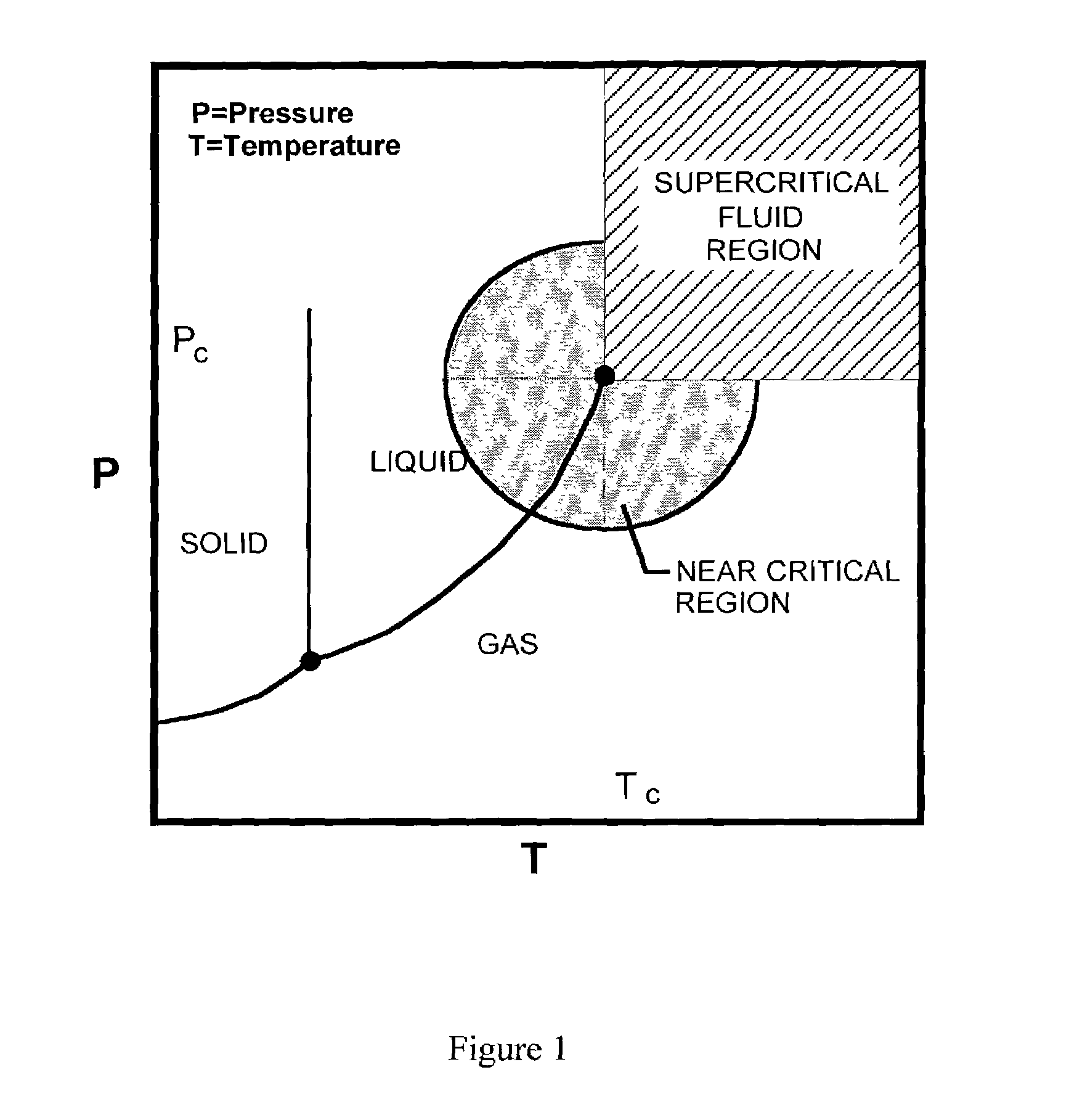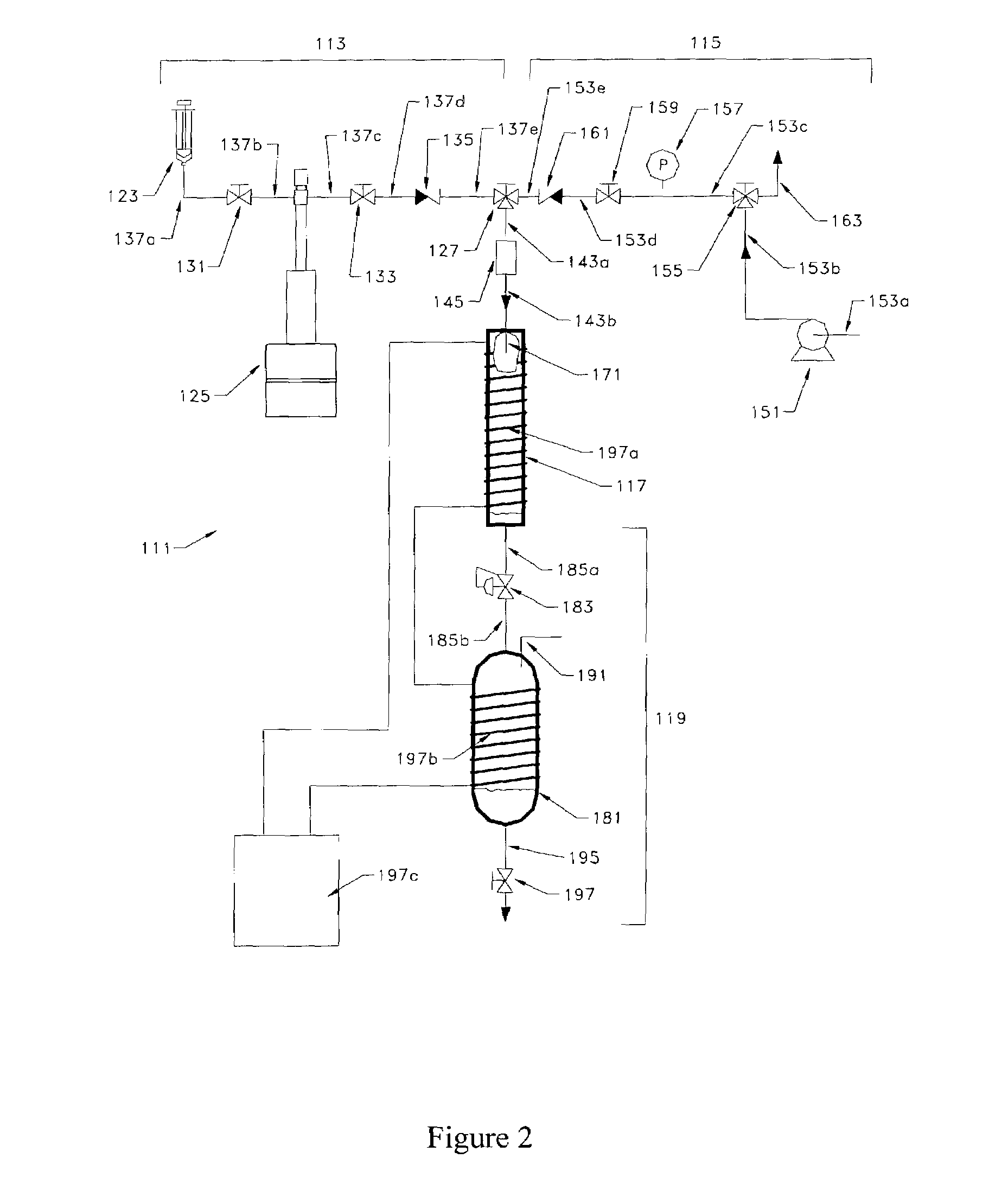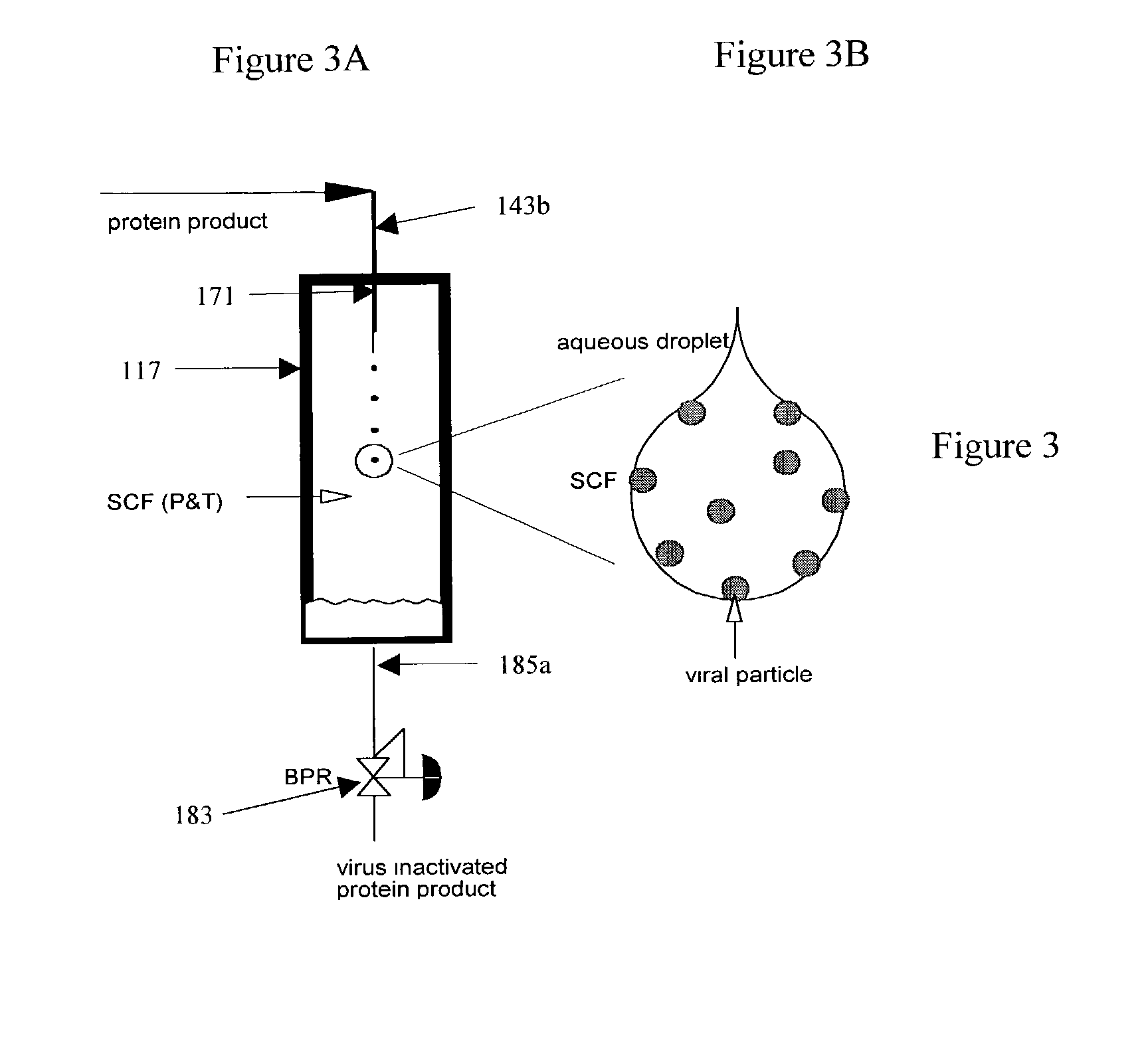Inactivated vaccines for aids and other infectious diseases
a technology of inactivated vaccines and infectious diseases, applied in the field of inactivated vaccines for aids and other infectious diseases, can solve the problems of death of over 95% of infected individuals, ultimate progression of disease, and early proving of unwarranted assumptions
- Summary
- Abstract
- Description
- Claims
- Application Information
AI Technical Summary
Benefits of technology
Problems solved by technology
Method used
Image
Examples
example 1
Inactivation of HIV-1 by Different SuperFluids at 3,000 psig and 22° C.
[0074]To determine the effect of different SuperFluids on HIV inactivation, supernatant from HIVΔtat-rev-infected CEM-TART cells was thawed the day of the experiment and diluted 1:10 in RPMI. Diluted virus was used immediately or kept at 4° C. A sample of diluted virus was held at the same temperature for the same time (t&T control) as that applied to the CFI unit. After the run, the tissue culture infectious dose 50 (TCID50) assay for the t&T control and CFI-treated samples was begun to measure infectious virus as described above. It was noted that cells at the top dilution of virus (1:10) did not grow, and therefore were not included when calculating the TCID50. Thus, the limit of detection for this assay is 2.7 logs. The Log Kill was calculated by dividing the Log TCID50 / ml of the t&T control by the Log TCID50 / ml of the CFI-Treated sample.
[0075]FIG. 5 and Table 2 show the results of eight experiments using dif...
example 2
Effect of Different SuperFluids CFI on HIV-1 p24
[0077]To determine the presence of a major capsid protein of HIV after treatment with SuperFluids, the amount of p24 in the t&T control and the CFI-treated samples for each SuperFluid was determined by ELISA (Table 3). Higher amounts of p24 were generally detected in the CFI-treated samples as compared to the t&T control samples.
[0078]
TABLE 3Effect of Different SuperFluids at 3,000 psig and 22° C. on HIV-1 p24 In aSingle-Stage Laminar Flow SuperFluids CFI Unitp24p24 Super-Co-[t & T][CFI-treated]Δp24Run No.FluidsSolventVirus(ng / ml)(ng / ml)[% Change]VAC-5N2ONoneHIV-1Δtat-rev5670+25VAC-6N2O / CO2NoneHIV-1Δtat-rev10999−9VAC-8Fr-22NoneHIV-1Δtat-rev120112−7VAC-9C3H8NoneHIV-1Δtat-rev146175+20VAC-10N2O5% CO2HIV-1Δtat-rev10782−23VAC-11N2NoneHIV-1Δtat-rev107143+34VAC-12CO2NoneHIV-1Δtat-rev1415+7VAC-13Fr-23NoneHIV-1Δtat-rev1420+43
example 3
HIV is Inactivated by CFI and Not by Exposure to CFI-Treated Culture Media
[0079]To determine if CFI-treated culture media could inactivate HIV, culture media was treated with SuperFluids N2O / CO2 (3,000 psig and 22° C.) and used to dilute HIV-1Δtat-rev for the TCID50 assay. This was compared to HIVΔtat-rev that was directly exposed to SuperFluids N2O / CO2 (3,000 psig and 22° C.). It was noted that cells at the top dilution of virus (1:10) did not grow, and therefore were not included when calculating the TCID50. Thus, the limit of detection for this assay is 2.7 logs. CFI-treated culture media was not able to inactivate HIVΔtat-rev as similar infectivity titers were obtained for control and treated samples, while CFI-treated HIVΔtat-rev was inactivated by greater than 3 logs TCID50 / ml (FIG. 6 and Table 4).
[0080]To determine if high pressure alone could inactivate HIV, the virus was pressurized to 3,000 psig for 15 minutes (this time exceeds CFI exposure) in the CFI unit and then remov...
PUM
| Property | Measurement | Unit |
|---|---|---|
| temperature | aaaaa | aaaaa |
| temperature | aaaaa | aaaaa |
| temperature | aaaaa | aaaaa |
Abstract
Description
Claims
Application Information
 Login to View More
Login to View More - R&D
- Intellectual Property
- Life Sciences
- Materials
- Tech Scout
- Unparalleled Data Quality
- Higher Quality Content
- 60% Fewer Hallucinations
Browse by: Latest US Patents, China's latest patents, Technical Efficacy Thesaurus, Application Domain, Technology Topic, Popular Technical Reports.
© 2025 PatSnap. All rights reserved.Legal|Privacy policy|Modern Slavery Act Transparency Statement|Sitemap|About US| Contact US: help@patsnap.com



